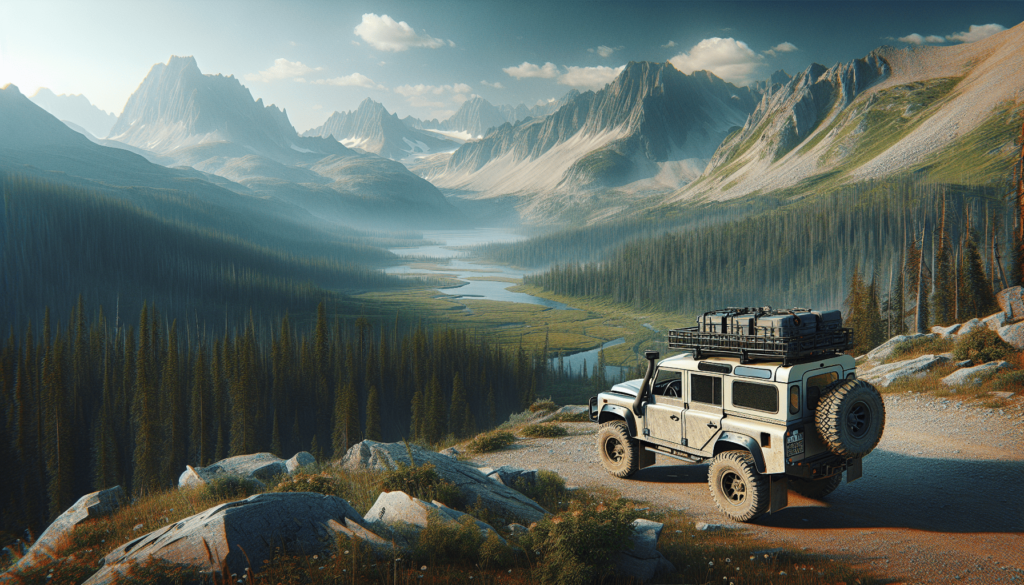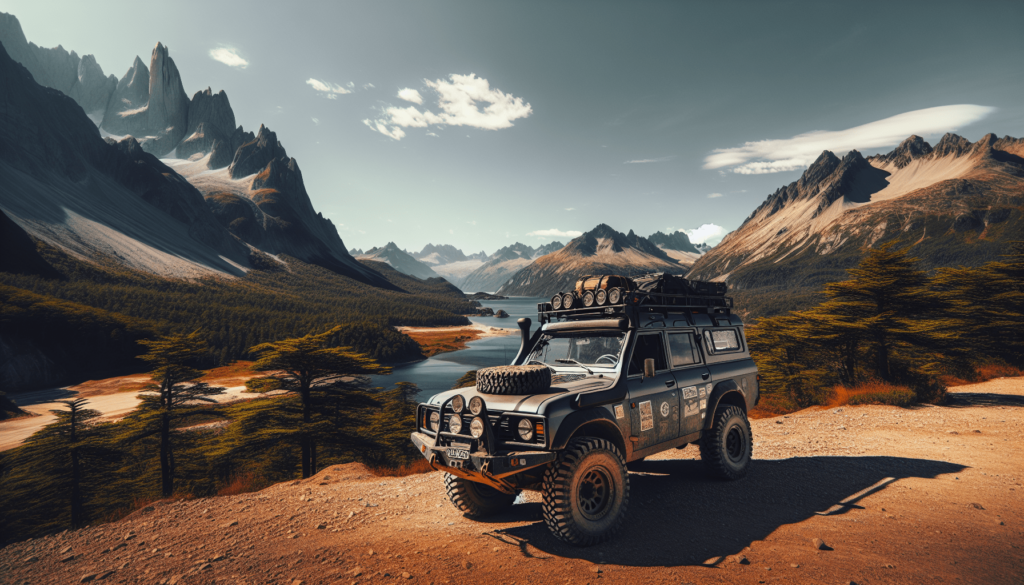How often have you found yourself in an area where your phone suddenly loses connection, leaving you feeling a bit stranded? When you’re out overlanding, that can be even more daunting. You want to ensure you’re well-prepared for off-the-beaten-path adventures, especially in areas with limited digital connectivity.
Understanding Overlanding
Overlanding is more than just camping; it’s about exploring remote regions with your vehicle, seeking adventure while having the chance to embrace nature. You’re likely on an adventure that entails traveling long distances through terrains where both amenities and digital connectivity may be sparse. This experience can be liberating, yet challenging. Knowing how to navigate effectively is essential.
What Makes Navigation Challenging in Remote Areas?
In many remote areas, cell service is scarce, if not nonexistent. GPS relies on satellite signals, which can be less reliable in dense forests or mountainous regions. Additionally, you may encounter maps that are outdated or not user-friendly. Understanding these challenges upfront will better prepare you for your journey.
Preparing for Your Adventure
Before heading into remote regions, proper preparation can make a world of difference.
Equipment Essentials
Having the right tools at your fingertips is critical. Here’s a list of items you might consider carrying:
| Equipment | Purpose |
|---|---|
| Paper Maps | Despite digital devices, having physical maps is essential as a backup. |
| Compass | To aid navigation without electronic devices. |
| GPS Device | A dedicated GPS device may offer better reception than a cellphone. |
| Portable Power Bank | Keeps your devices charged without finding an outlet. |
| First Aid Kit | Always be prepared for injuries or emergencies. |
| Emergency Blankets | Useful for warmth or signaling in emergencies. |
| Multi-tool | A handy tool that has various functions. |
By ensuring you have these items, you can navigate with confidence, even when technology fails you.
Research Your Route
Before setting out, spend time researching your route. This includes identifying potential challenges, such as rough terrain or areas where you might lose connectivity. Websites and forums dedicated to overlanding often provide valuable insights from fellow travelers.
Planning for Fuel and Food
Don’t overlook fuel and food supplies! Design a plan that maps out when and where to refuel and restock supplies. Some remote areas may have limited resources, so carry extra fuel and non-perishable food.

Navigation Tools for Overlanding
Having the right navigation tools is vital, particularly in regions with limited digital connectivity.
Digital Maps and Apps
While digital connectivity may be limited, you can prepare by downloading maps and apps that function offline. Here are a couple you might consider:
| Application | Features |
|---|---|
| Gaia GPS | Offers a range of terrain maps and allows offline downloading. |
| Google Maps | Pre-download maps for offline use, just be sure to save them before you lose signal! |
Download the maps of the areas you’ll be traveling to in advance. This ensures you have a working map, even when your connectivity relies on nothing but fresh air.
Offline GPS Devices
Investing in a good offline GPS device can prove incredibly beneficial. These devices often work without cell towers or internet connections, providing accurate navigation.
Compass and Topographic Maps
For those who prefer traditional methods, a compass and a set of topographic maps will not fail you. Understanding how to read a map and use a compass can add another layer of confidence to your navigation skills.
Mastering the Art of Map Reading
Understanding Topographic Maps
Topographic maps display terrain features and show elevation changes. Familiarize yourself with key symbols and how to interpret these. By understanding contour lines, you’ll be able to identify hills, valleys, and flat areas effectively.
Using a Compass
Steps to Use a Compass
- Identify Terrain Features: Look around and recognize any visible landmarks.
- Align Your Map: Rotate your map to match the direction you are facing.
- Take a Bearing: Point the compass toward your destination, follow the needle, and adjust for declination if necessary.
- Follow the Bearing: Keep an eye on your compass as you walk, making adjustments as needed.
Being comfortable with these navigation techniques boosts your ability to explore confidently.

Staying Safe While Overlanding
Safety should always be a priority as you embark on your adventures.
Emergency Communication
Although digital connectivity may be limited, consider investing in a satellite phone or a Personal Locator Beacon (PLB). These can be critical in emergency situations, allowing you to reach out for help when needed.
First Aid and Survival Skills
Having first aid knowledge can be invaluable. Consider taking a wilderness first aid course to prepare for injuries or emergencies. Furthermore, familiarize yourself with basic survival skills—knowing how to start a fire, purify water, and build a shelter can be life-saving.
Unexpected Situations
While adventures are thrilling, they can also come with unexpected events. Always be prepared for various scenarios, such as vehicle breakdowns or extreme weather changes.
Finding Your Way in the Wilderness
In regions with limited connectivity, you may have to rely on your instincts and navigation skills. Here are some techniques to help you find your way:
Land Navigation Techniques
- Plan Frequent Points of Reference: Use landmarks, such as mountains or streams, to create a mental map.
- Use the Sun for Direction: Knowing where the sun rises and sets can offer helpful directional clues.
- Follow Water: Rivers and streams often lead to populated areas or roads.
Key Points to Remember
- Always have a backup plan.
- Carry enough supplies, tools, and food to sustain yourself for longer than expected.
Document Your Journey
Journaling your experiences can be rewarding. Not only does it create lasting memories, but it also aids in future routes. By noting ground conditions, friendly locals, or tricky turns, you create a valuable resource for future travels.
Photography Imagery
Capture the breathtaking beauty around you. When you’re off-grid, you’ll want to commemorate that time spent away from technology. Besides being a fun activity, photographs can serve as navigational aids, helping you recall areas you’ve traveled through.
Conclusion
When overlanding in regions with limited digital connectivity, preparation is key. Equipping yourself with the right tools and skills is essential for navigating remote areas. Trusting your instincts and embracing nature’s challenges can lead to incredible adventure stories.
By prioritizing safety, being aware of your surroundings, and documenting your experience, you not only ensure a safe journey but also enrich your overall expedition. As you prepare for your next adventure, keep these principles in mind—you’re bound to have a memorable experience out there in the wild.

